“Picturing Success: Elevate Your Staffing Firm With Data Visualizations”
August 26, 2014
Are you experiencing “big data” overload? Researchers have found that 90% of the world’s data has been generated since 2011. Where is all of this data coming from? Cell phone records, credit card transactions, and internet and television viewing habits are just a few examples. It is estimated that the volume of business data worldwide is doubling every 1.2 years. This explosion of big data has highlighted a crucial need to deliver better reporting solutions. As a result, many companies have turned to business intelligence and data visualization software to assist. Gartner estimates that the market for BI reporting platforms grew to $14.1 billion last year. Companies as diverse as Coca-Cola, General Motors, Netflix, and even the Texas Rangers baseball team have made recent investments in data visualization software to empower their employees and assist with measurably faster decision-making.
The staffing industry, in particular, is ripe for tapping into data visualization solutions. It’s a sector that accumulates a high volume of data like job orders, applicant records, and client contacts. Depending on how and where the data is stored, producing meaningful insights can prove challenging, but new advances in business intelligence software is making it easier than ever to unlock the power of big data.
Previously, access to cutting edge BI and data visualization software was limited to large corporations with the size and budget to deploy large-scale enterprise solutions. This often involved a variety of departments and roles such as data analysts, graphic designers, and BI specialists. In recent years, however, data visualization software has become much more affordable, easier to use, and faster to implement. Savvy staffing firms can obtain greater recruiting efficiency by building data visualizations to track key performance indicators.
The name of the game today is accessibility, as many of the leading BI vendors and software providers are now focused on delivering solutions that are easy to work with, from both a developer and end-user perspective. The user emphasis has shifted from IT specialists and business analysts, to include anyone with an interest or need for visual reporting. The goal is to enable self-service by giving the end user the ability to make data discoveries on their own. Many of the leading software providers include drag-and-drop functionality, simple user interfaces, and rich graphical tools that allow users to develop powerful visualizations. Many vendors also maintain a robust web presence, offering online help resources and support forums, so new users can get up to speed quickly.
Furthermore, most data visualization software is versatile enough to handle virtually any data source and often include a step-by-step wizard to assist users with loading their data. This is where the quality of a company’s data comes into play. Staffing firms with meticulous record keeping habits can reap big rewards when it comes time to link their data. Conversely, firms with incomplete records or spotty data keeping methods will find it much more challenging to build useful reports.
Once an informative report has been built, the next step is to make it easy to share with others. One method is to integrate the various worksheets and views created within the software into a fully interactive dashboard, which can combine multiple graphs, charts, gauges and tables. Most software includes advanced sharing functions, such as the ability to print, email, or export to Excel, making it simple to distribute.
From a staffing industry perspective, the benefit of using data visualization software is the ability to create customized recruiting dashboards. A few of the metrics that can be most beneficial to track include Time to Fill, Average Number of Submittals, Top Revenue Producers, and New Client Starts. Another advantage is that the link to the original data source can be refreshed as often as desired, allowing a company to engage in near real-time scorekeeping. This can help a firm with analyzing their strengths and weaknesses as they relate to recruiting efficiency and candidate sourcing.
Overall, the growth of big data has presented companies with new, complex challenges in regards to how they process, analyze, and draw insights from their data. Data visualization is one method that can combat this information overload. Never before has it been easier for businesses to create impressive and enlightening visuals that tell a story with data. Any staffing company that leaves data sitting on a server or in a spreadsheet, without analysis, is missing a major opportunity to harness the power of big data. With the great selection of affordable and accessible data visualization solutions on the market today, anyone can become a master of their data and take their business to the next level.
Photo Credit: Travel and Tour World
Author: Mike Roeslmeier is the Data Visualization Specialist at Automated Business Designs, Inc., software developer of Ultra-Staff staffing software for the staffing and direct hire industry. Ultra-Staff is a full-featured business solution with components for Front Office, Back Office, Mobile and Web Suite. For more information on Ultra-Staff, take the first step with a Discovery Meeting!

